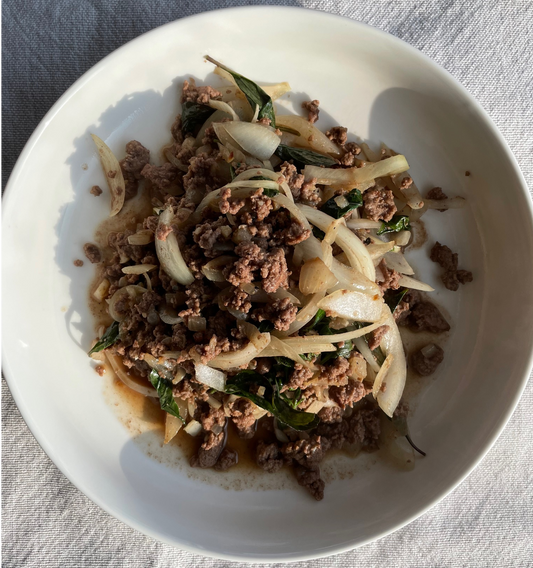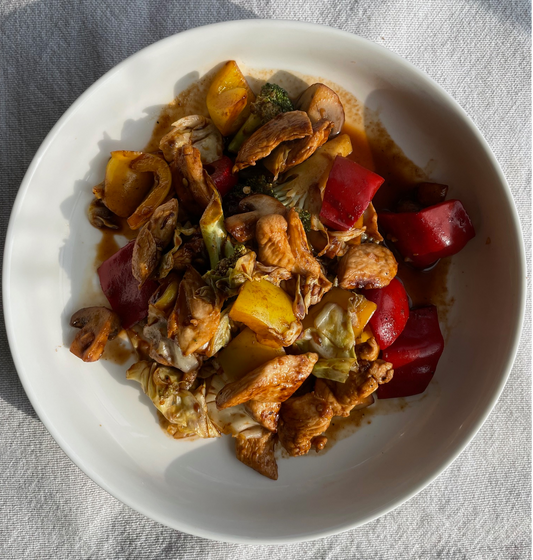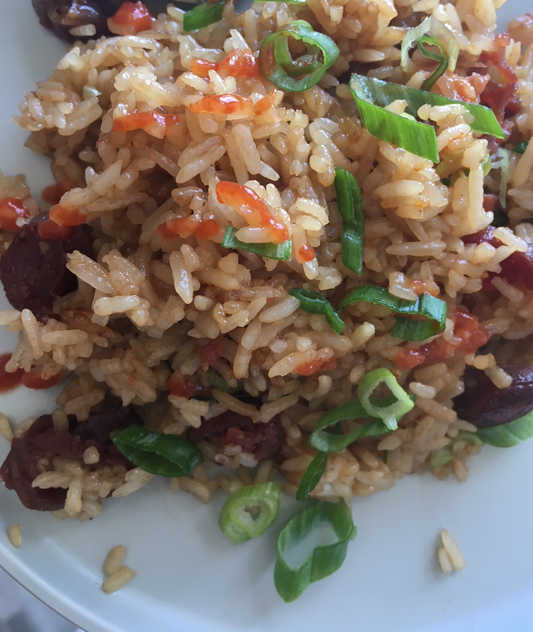Sauce making is arguably the most essential part of Asian cooking. At the core of every childhood favorite or takeout staple is a perfect flavor bomb made from a blend of generational sauces and spices. There’s the classics: black vinegar, soy sauce, Chinese five spice. The veterans: fish sauce, oyster sauce, sesame oil, chili oil. The remixes: char siu sauce, sriracha, teriyaki. Any one bite takes you through the worlds of salty, sweet, nutty, umami, tangy, spicy. All delicately balanced for your taste buds’ pleasure.
Anyone else suddenly hungry?
In Asian cuisine, there’s no shortage of flavors to choose from, whether you’re making a generational recipe or getting rid of weekend leftovers. You may have used them a million times—grown up in kitchens overstocked with bottles of every Asian sauce imaginable. You may have stumbled upon them in your own personal food journey, experimenting with soy sauce on eggs or chili crisp on pasta in inspired late-night sessions to your fridge. That’s the beauty of Asian sauces—they’re versatile, delicious, and perfect for anyone with taste buds.
Regardless of how you’ve stumbled across and incorporated them into your daily eats, it’s nice to know where they’ve been. Though the Asian sauces we use today are still fairly comparable to their original permutations, each one carries a long and legendary story. When we study and celebrate these sauces, we also discover new dimensions and depths within them—new directions to carry those stories forward.
This is especially important as we, the next generation, step into our roles as curators and couriers of our age-old sauce traditions. As second and third culture kids, we get to define the new era of Asian American sauces—true hybrids of our tastes, techniques, cultures, and generations. But first, a look back to look forward.
A brief history of Asian sauces
It’s sometimes surreal to remember that the sauces that now come in little plastic packets or colorful glass bottles had traveled for centuries, dynasties even, before we encountered them. Asian sauce making, as a craft and an art, dates back to the ancient days of human history—there’s mentions of doubanjiang, a spicy Chinese paste made from fermented soybeans, in the Rites of Zhou from 3rd century BC.
Soy sauce (a true OG) is so old its precise origins is unclear, evolved over more than 2,000 years of sauce-fermenting tradition since the Qing dynasty. Fish sauce has been around since 7th century BCE in Europe and North Africa, before finding its way to Southeast Asia. Or was it the other way around? Some scholars believe two different variations were simultaneously invented across the world, each with no knowledge of the other. Chinese legend traces the invention of black vinegar some 1400 years back; chili peppers in Asia appeared over five generations ago.
Basically, our Asian sauces have seen a lot. And by each generation’s hands, found new variations, pairings, palates, and entire dishes that keep our taste buds craving more. Flavor is universal and flavor is constant—but how we use changes and adapts as we do.
As we, the next generation of home chefs and expert eaters, create our own kitchens, the challenge of honoring these sauces and pushing them to new limits becomes ours too. Knowing the history of our sauces is step one. Appreciating their unique singularity in our spice cabinets is step two. And finding more and new ways to incorporate them is forever step three. Here are the greatest sauce hacks we’ve discovered at Bowlcut.
New ways to spice up time-honored sauces
Chili Crisp, on everything
In the lineup of Asian sauces, chili oil is an absolute force to be reckoned with—when we say everything, we really mean it. If you don’t believe us, drizzle a generous amount of our all natural Chili Crisp on these unexpected combos:
- Your morning eggs, any way you like them
- Or this prosciutto and cantaloupe toast by Bon Appetit (just trust us)
- Sub salsa for Chili Crisp in one of your Tuesday night tacos
- Midnight cookies, why not?
You can thank us later. (Our DMs are open.)


3-in-1 Char Siu BBQ
Char siu sauce is one of those perfect sauces that hits the flavor trifecta: sweet, salty, and just a little bit tangy. It’s made from a little bit of all the favorites: soy sauce, sesame oil, hoisin sauce, Chinese five spice, the works—but can take hours to marinate right.
We don’t have the time for that, so we made our own ready-made version–with a mouthwatering barbecue flair. It smells like your grandma’s char siu pork, and works like a charm on any lackluster dish. Like:
- 6-ingredient meatballs
- Last night’s chicken
- Rice bowls of any kind
- Even a summer salad?
Don’t be shy. Give it a go. Flex your new dishes in our DMs at @thebowlcut_official. (We love to show you off.)





